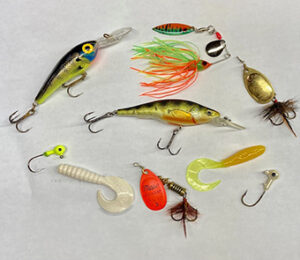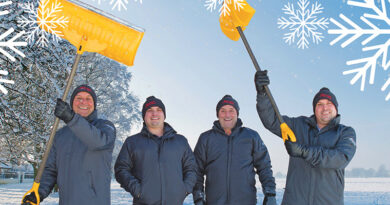Those Wonderful WALLEYE!
If there is one thing that I could say about our long Ontario winters it’s that it makes me appreciate the spring even more. In particular, I look forward to the ice receding from our Kawartha Lakes and the opening of Walleye season.
Walleye are a freshwater fish in the perch family and are a highly sought after game fish. Typically, Kawartha Walleye are gold and olive in colour, with a white belly. Often their backs have five or more black bands or “patches” that fade along their sides. They have two dorsal fins—one spiny and one soft-rayed. Additionally, they have extremely sharp gill plates and a formidable set of teeth so caution must be exercised while handling them.
Early season Walleye fishing offers anglers the best chance of being successful. Cold water temperatures usually keep the fish in relatively shallow water for the first month after opening, eliminating a lot of the guesswork on their location.
Here is my approach when targeting Kawartha Walleye in the spring.
Location is everything
From the opener in mid May until about the second week of June, you will find me fishing for Walleye in what I would consider to be very shallow water. In dirty, muddied or stained water, depths ranging from 3 to 7 feet will hold a large population of hungry Walleye. These fish have just finished spawning and will set up in a “holding” pattern on shallow flats, the edge of drop offs and along channels. In lakes with clearer water, try starting your search a bit deeper.
The Key Three
There are three very simple techniques that I would recommend you use.
A simple ball head jig tipped with a white or yellow twister type plastic grub, a shallow diving crankbait (one that dives from 2 – 5 feet on a steady retrieve) and a small in-line spinner or spinnerbait style lure.
The jig can be cast and “bounced” along the bottom in a yo-yo style retrieve. Strikes will usually occur while the jig is falling to the bottom so pay attention to your line and if it twitches- set the hook.
When fishing crankbaits, I prefer a steady retrieve. I find that it allows the fish more time to line up on the bait and in stained/dirty water I have had better success using this style of retrieve versus an erratic pause/pull or jerk.
The most versatile of the 3 techniques are the in-line spinners and spinnerbait style lures. They can be worked slowly near the bottom or retrieved closer to the surface, it all depends on the speed of your retrieve. I also like to use these types of baits when fishing around cover such as stumps, logs and emergent weed growth.
Keep it simple
An important thing to remember when utilizing these techniques is that the majority of the lures used are smaller and lighter  than those we associate with Bass fishing. For that reason, I usually rely on spinning rods and reels to tackle the task at hand. Medium power rods with fast actions varying in lengths from 6 1⁄2 to 7 1⁄2 feet and spinning reels spooled with 8 to 10 pound braided line check all the boxes. I will add that I like to have a fluorocarbon leader that transitions from the braided line to my lure but often the poor water clarity makes it unnecessary.
than those we associate with Bass fishing. For that reason, I usually rely on spinning rods and reels to tackle the task at hand. Medium power rods with fast actions varying in lengths from 6 1⁄2 to 7 1⁄2 feet and spinning reels spooled with 8 to 10 pound braided line check all the boxes. I will add that I like to have a fluorocarbon leader that transitions from the braided line to my lure but often the poor water clarity makes it unnecessary.
For now, I will have to wait a little longer until winter releases me from its icy grip, but you can bet I’ll be chasing those wonderful Walleye soon!
Good luck and get outside!
Mike Quesnelle, GOAT Angling Adventures
705 934-1450




